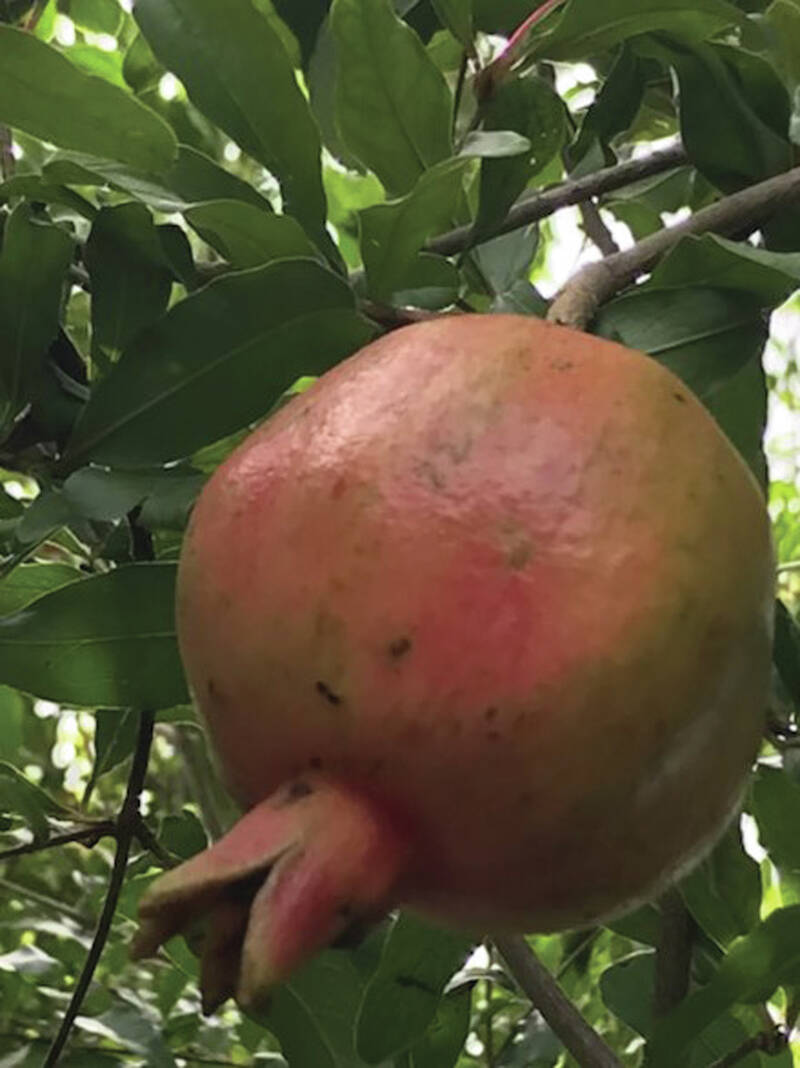
|
Only have a minute? Listen instead
Getting your Trinity Audio player ready...
|
Interest in cultivating pomegranate has grown in recent years in the United States as its health benefits have become better understood.
Pomegranate, Punica granatum, is native to the Middle East and it has been cultivated in the Mediterranean and North Africa for more than 5,000 years.
Pomegranate does best in a Mediterranean type climate with mild winters and long, hot, and dry summers. In the United States, areas of California and Arizona have been the primary commercial production areas, but Texas has a climate that is suitable, especially in the dryer counties.
Pomegranate trees are long lived (upwards to 200 years), however prime production is between 3 to 15 years. Fruit is used both fresh, in juice mixtures, and in cooking. Some varieties do not produce fruit or produce only small quantities and are grown for ornamental use. Every part of the plant, roots, flowers, and fruit has some beneficial use.
The Jesuit missionaries introduced pomegranate to Mexico, and it is likely that the first pomegranate in our area were grown from cultivars coming from Mexico. Fruit of the pomegranate can last up to three months and it is believed that the fruit traveled to Mexico originally with Spanish explorers.
Pomegranate flowers and fruit come in a variety of colors ranging from white to red with many shades of orange and pink in between. The fruit contains a white, spongy, tissue with sacs filled with edible, sweetly tart, juicy pulp, called arils. Each sac contains a soft or hard seed, depending on the cultivar, and it is the soft-seeded cultivars that are consumed fresh. It is not recommended that we consume hard seeds.
Once the fruit is opened, the arils last about 3 to 4 days in the refrigerator. These are easy to add to salads or top of yogurt to enjoy raw.
Pomegranate is a shrub that grows in full sun. The plants reach 15 to 33 feet in height, depending on the variety, and are pruned, much like peaches, to maintain major branches.

Pomegranate begins producing fruit in the third or fourth year after planting. It will not handle wet feet, so it needs to be planted in raised beds. Locally, you can find pomegranates for sale at Waugh’s Nursery in Pharr.
Texas A&M University has a publication on growing pomegranate, with details on fertilizer recommendations and irrigation requirements, as well as information on desirable varieties. This publication can be downloaded at http://aggie-horticulture.tamu.edu/fruit-nut/pomegranate.
The health benefits of pomegranate are numerous, and many consider it a “super food.” Pomegranate arils, not juice, are very high in vitamin C. It is also high in vitamin K and is rich in fiber, minerals and bioactive plant compounds with powerful medicinal properties. Most of the vitamin B complex is also present in pomegranate. It has impressive anti-inflammatory properties that are especially active in the digestive tract. Pomegranate may help fight several cancers, including breast cancer. This fruit has more antioxidants than acai berry or green tea. If you are on statins or certain blood thinners, talk to your doctor before adding pomegranate to your diet. It can react with medications just as grapefruit does.
While researchers have just begun to discover some of the benefits of pomegranate, residents of South Texas can enjoy locally grown, freshly harvested pomegranate.
You can get fresh pomegranate Saturday at the Farmers Market in McAllen’s Firemen’s Park, 201 N. 1st St., just off Business 83. The market is open weekly Saturday mornings from 8:30 until noon. Right now, the market has an abundance of locally grown summer fruit, including peaches, pomegranate, figs and a variety of dragon fruit.
If you are interested in planting pomegranates, plan on putting them in the ground in late September or early October to give the plants time to get established under cooler conditions. The size of these shrubs make them ideal for planting in a smaller garden area.
Barbara Storz is a local horticulturist writing about plants that grow well in south Texas. You can follow her on Facebook at Barbara Storz.



